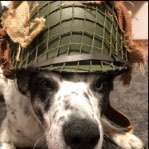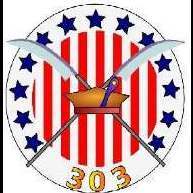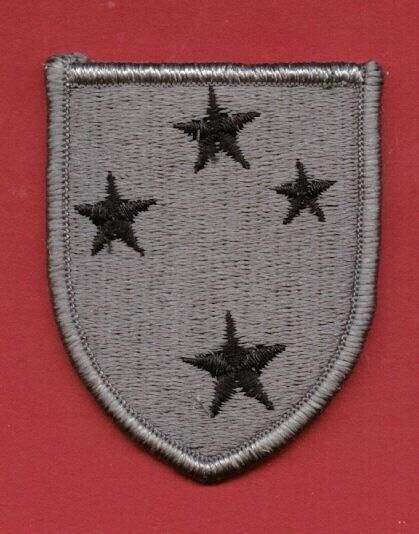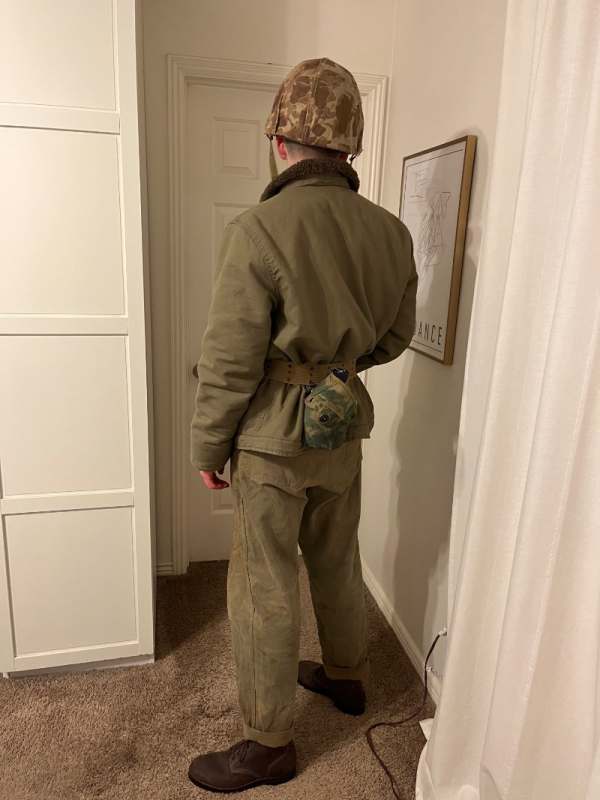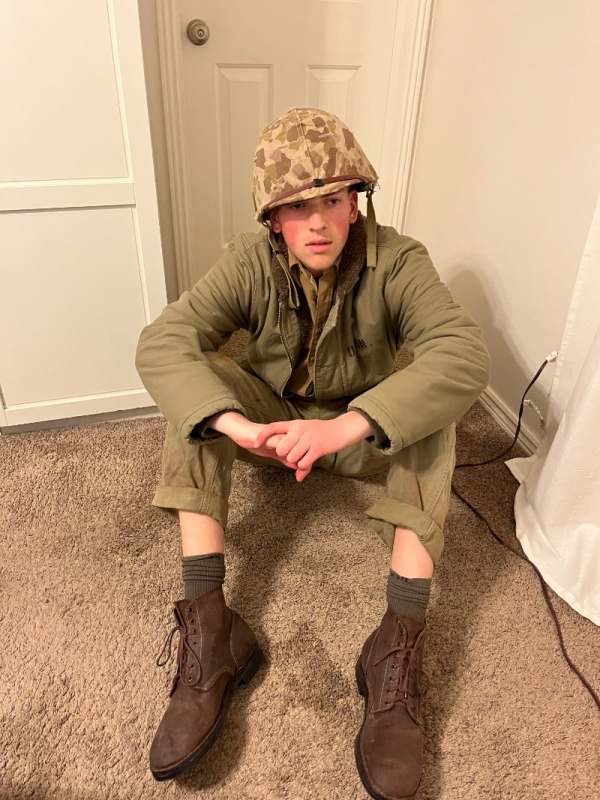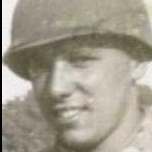All Activity
- Past hour
-
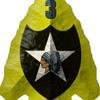
WWII US Army- examples of OD bottoms with summer khaki tops?
Rhscott replied to BigBrother's topic in UNIFORMS
Well, it was allowed per regulation. In AR600-40 dated 28Aug1941 either the wool or khaki cotton shirt was allowed for wear with the wool trousers when the service coat was worn. Also stated in that regulation; Commanders may authorize the wear of the khaki shirt without the service coat. -
https://www.mustdobrisbane.com/visitor-info-arts-culture-history-film-theatre/golebys-basement-ipswich
- Today
-
As stated, the camo straps are for packing/rolling up the blanket & camo shelter half. There are loops/straps on the camo shelter half that these straps are secured through. 700$ is a very fair offer/maybe even high side of an offer. You werent getting lowballed, thats for sure.
-
Those are some very nice and very rare trousers! All WW2 Jungle Greens are rare now, and these would certainly be correct for our portrayed period.
-
I try to translate the article about this crash from Swedish to English… The plane crash at lake Röjden, Värmland - Text by Bengt Hermansson – F/O E. Atkinson, Pilot Sgt W. Wright Flight Engineer F/O W.S. Long Bomb Aimer Sgt K.H. Rundie, Navigator F/O H. Ashton, Wireless Operator Sgt W. Flynn, Gunner Background to the incident: Operation "Apostle I" was a plan approved by SHAEF (Supreme Headquarters Allied Expeditionary Force) which in brief called for the German forces in Norway to surrender unconditionally and for there to be no organized resistance and for the German forces to disarm themselves. This is so that Norway could be occupied with a minimum of allied forces. Heavily armed forces were to be transferred to Norway with an airlift as a prelude to the operation. This first part was named "Operation Doomsday". The Allies had over 14 British and American squadrons equipped with aircraft of types such as Short Stirling IV, Handley Page Halifax III, Consolidated B-24 Liberator and Curtiss C-46 transport aircraft. Unfortunately, no less than 30 of the aircraft were killed during these operations to Norway. The aircraft: The Short Stirling was the world's first heavy bomber equipped with four engines. The type first flew in 1939 and the first operational mission took place on 10 September 1941. A problem that followed the type throughout its production period was that it was unable to fly above 20,000 feet (6,100 m), due to the short span. In addition, the machine had a bomb compartment that could not be adapted to the increasingly large bombs that were produced. The Stirling was taken out of service in 1944. The machines used in "Operation Doomsday" were former bombers that had been modified (back turret and front ksp turret removed) and used as, among other things, tugs for gliders. The assignment: Phase 1 of the operation began on Wednesday, May 9, 1945. Parts of 1st. Airborne Division enters the transport aircraft. The crossing goes according to plan and forces are landed at Kjevik and Sola. Thursday, May 10, it was time for Phase II. This, Ascension Day, would end in great tragedy for many paratroopers and aircrews. Over Norway, a storm had unexpectedly built up with rain, fog and very low cloud cover. The only navigation aid the aircrews had was a direction finder whose transmitter (Rebecca) was on board the plane and on the ground, at the landing site, was the receiver (Eureka). The signals from the Eureka at Gardermoen, which was the target, were very weak and were not picked up by several of the aircraft. The accident: The first to get into trouble was F/O E. Atkinson in Stirling LJ899, of 190 Squadron, which took off from Great Dunmow in Suffolk at 02:50. While circling to find some hole in the cloudiness, he came too far east and found himself in the border areas with Sweden. In addition, they encountered technical problems and saw no other way out than to attempt an emergency landing. In these wooded areas there were little chances for good emergency landing sites. Atkinson set his sights on a small lake. Lake Röjden was the place he chose. Eyewitnesses can tell about the sequence of events: "It was about 6 o'clock in the early morning of May 10 when a large four-engine airplane came at a very low altitude towards the Röjdåfors customs station. The weather was bad with fog and rain. The plane swerved around a few turns and finally flew out over the lake at low altitude. One wing hit a tree and broke off before the plane hit the water. The rear body broke off and sank. The rest of the plane continued towards the beach where it collided with a tree”. Swedish military personnel were quickly on the scene. At first it looked as if everyone had made it through life. It then turned out that four paratroopers were missing. They had probably followed with the rear body, which sank, into the depths. Some injured were sent to the hospital in Torsby. The others were sent overland to Norway on 12 May. Later, the four dead were found and on May 16 they were buried at Fryksände Church in Torsby with large participation from the local population. The burial of the victims took place in Torsby and the burial at Fryksände on 16 May 1945. The remains were moved in the 60s to Kvibergskyrkogården in Gothenburg. The M3 was ”found by a policeman who gave it away to a neighbour. That guy gave it to another guy who had a son who was a classmate to the guy I bought it from… Hope this is understandable...😀 They also found another blade but that one is now in a museum.
-

WWII US Army- examples of OD bottoms with summer khaki tops?
BigBrother replied to BigBrother's topic in UNIFORMS
Ah, there we go! Thanks! I wonder if you or anyone else has the inverse (khaki shirt, OD pants), which I would’ve expected long before seeing this. Go figure! -
. From my Shoebox Collection. A pair of unusual British Jungle trousers made under a US war-aid contract. Made to a British pattern featuring two small strap and buckles on the waist-line, Large Belt loops with button fixtures for the pistol belt to be worn under these straps. The front has button fly closures with a US style gas-flap closure behind the button opening . There are two internal side pockets and one large pocket on the front left leg. Two large rear pockets with button flaps ( the left pocket has been removed on this particular pair, and also a belt loop above the right pocket ). The ankles have draw-string tie tapes. The manufacturers printed label has washed out which also included the manufacturing date. Norman D. Landing, Forum Normandy Correspondent, April 16 2024. ...
-
Update. I guess their email was down or something because I tried messaging them again and they responded quickly saying that my order would be shipped soon.
-
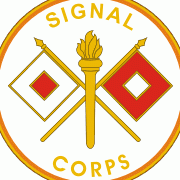
Sgt Robert George Reiser
gerard replied to gerard's topic in IDENTITY ITEMS (DOG TAGS, BRACELETS, ETC)
I am always interested in more information on Sgt Robert George Reiser, thank you in advance -
Many thanks for pointing that out Kurt. I wouldn't have known otherwise as I am complete novice when it comes to these patches! I looked at the entry on the 13th Airborne on Wikipedia and I can see what you mean from the example of the patch shown.
-
Sory for off-topic, Kurt quick question how about smaller blue airborne tabs? Where did they go, or supposed to go?
-

Museum-Memorial of the combats of the Pocket of Colmar - Winter 1944/45
gerard replied to gerard's topic in MUSEUMS, BATTLEFIELDS, AND MONUMENTS
-

Museum-Memorial of the combats of the Pocket of Colmar - Winter 1944/45
gerard replied to gerard's topic in MUSEUMS, BATTLEFIELDS, AND MONUMENTS
-

Museum-Memorial of the combats of the Pocket of Colmar - Winter 1944/45
gerard replied to gerard's topic in MUSEUMS, BATTLEFIELDS, AND MONUMENTS
-

Museum-Memorial of the combats of the Pocket of Colmar - Winter 1944/45
gerard replied to gerard's topic in MUSEUMS, BATTLEFIELDS, AND MONUMENTS
Hello and thank you for your comments -
Americal and 24th Corps ACU, if worn, worn as a Combat Patch for Vietnam, a man who spent a long time in the Army.
-

127th Airborne Engineer Battalion - World War 2 or later?
patches replied to VMI88's topic in ARMY AND USAAF
Possibly German Made when the 11th Abn Div was in Germany in the 50s. -

WWII US Army- examples of OD bottoms with summer khaki tops?
patches replied to BigBrother's topic in UNIFORMS
And a whole Company, earlier in the 30s by the looks of it. Officer there wearing the standard Shade OD, a unit of the Hawaiian Division, Infantry we suppose, Regiment not mentioned though unfortunately, these being ether the 19th, 21sth, 27th, 35th Infantry Regiments. -
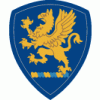
Museum-Memorial of the combats of the Pocket of Colmar - Winter 1944/45
ScottG replied to gerard's topic in MUSEUMS, BATTLEFIELDS, AND MONUMENTS
Great looking museum with some amazing items and top notch displays! Thank you. Scott -

WWII US Army- examples of OD bottoms with summer khaki tops?
patches replied to BigBrother's topic in UNIFORMS
-
Please provide pictures that are more clear of the area around the inner and outer curve of the thick base. Specifically, I'm looking to determine if there are indications it might have been made from a M7 grenade launcher base. Thank you.
-
Once again I appear to be following the “third times a charm” trend with this impression. However, I believe it to be better than the first two once again. This is my Seabee on Okinawa impression. I chose to have my man decked out in a deck jacket as the navy would have access to them and Ernie Pyle can be seen wearing one as well (Given to him by my Great Uncle before Iwo no less! ‘With written documentation’) before he was killed by Japanese machine gun fire. I think it turned out great, but comment any tips or advice you see fit! Thanks. Enjoy.
-
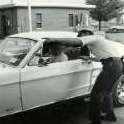
1958 TAC Firepower Demonstration Team
Marshallj replied to F 106 Pilot's topic in AIR FORCE (USAAF IS WITH ARMY)
Glad to hear it. Phonies are coming out of the PI. Not with that name. Maybe "Dive Bomb" was his call sign. -
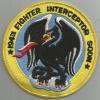
1958 TAC Firepower Demonstration Team
F 106 Pilot replied to F 106 Pilot's topic in AIR FORCE (USAAF IS WITH ARMY)
He was flying the F 100 at this time -
Welcome. Ask questions, get involved!



















